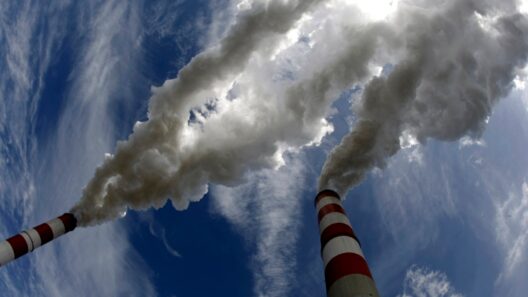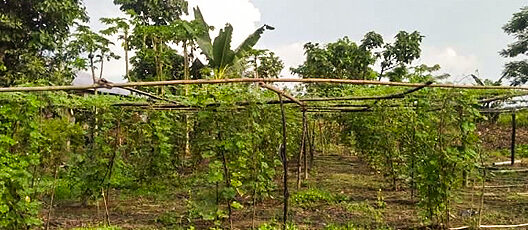In the grand tapestry of Earth’s ecosystem, forests emerge as verdant lungs, breathing life into our planet while simultaneously serving as powerful foes against the ominous specter of global warming. This majestic greenery, woven together in intricate harmony, offers us unique lessons on resilience and regeneration. To fathom how forests contribute to the mitigation of climate change is to appreciate their role as nature’s carbon sinks.
As atmospheric CO2 levels rise, primarily through anthropogenic activities such as fossil fuel combustion and deforestation, forests act as buffers. They absorb carbon dioxide from the atmosphere, storing it in their vast biomass. This process, known as carbon sequestration, transforms trees and foliage into natural vaults for carbon, a critical mechanism in the fight against the escalating greenhouse effect. Each tree, whether it towers majestically or stands firmly as a shrub, plays a pivotal role in this intricate system.
Consider the ancient oak tree: its gnarled branches cradle a multitude of leaves that engage in a dynamic dance of photosynthesis. This age-old process transfigures sunlight and atmospheric CO2 into glucose and oxygen, essentially converting the very elements that exacerbate global warming into sustenance for the forest. Larger trees, with their extensive root systems and towering canopies, hold a staggering amount of carbon within their structure. Research indicates that mature forests can store up to a thousand tons of carbon per hectare, thereby emphasizing their significance as carbon repositories.
Yet, the symbiotic relationship between forests and climate regulation is not limited to carbon storage alone. The ancient woodlands also foster biodiversity, providing refuge to myriad species, from the smallest insects to the most elusive mammals. This biodiversity is crucial; it assists in maintaining ecological balance, allowing these sprawling ecosystems to withstand and adapt to environmental changes. In turn, a flourishing biodiversity enhances the resilience of forest ecosystems, making them better equipped to absorb carbon and regulate climate fluctuations.
Moreover, forests influence local and global climates through a phenomenon known as transpiration. As trees release water vapor into the atmosphere through their leaves, they contribute to the formation of clouds and precipitation patterns. This moisture recycling not only helps in regulating temperature but also mitigates the impacts of drought and extreme weather events. The canopy of trees acts like a sponge, soaking up rainfall and gradually releasing it back into the environment, sustaining both the forest and the surrounding areas.
In considering the significance of forests in combating climate change, one must also acknowledge their role in reducing the urban heat island effect. Urban areas, often concrete jungles, tend to absorb and retain heat, resulting in soaring temperatures. However, strategically planted trees can temper this phenomenon, providing a cooling effect that contributes to energy conservation and improved air quality. The shade offered by trees significantly lowers the need for excessive air conditioning in summer, thereby diminishing electricity consumption—and consequently, carbon emissions.
It is also paramount to recognize the threats faced by forests globally. Deforestation, driven by agricultural expansion, logging, and urbanization, heralds the diminishment of these vital carbon sinks. When trees are felled, not only is their carbon storage capacity lost, but the very act of cutting releases vast amounts of CO2 back into the atmosphere. Additionally, the fragmentation of forests disrupts habitats, impairs biodiversity, and stymies ecological functions. Combatting these threats necessitates global cooperation and sustainable practices, ensuring that forests can thrive for generations to come.
One of the most compelling metaphors for understanding this conservation imperative is that of a jigsaw puzzle. Each tree, each species, each ecosystem piece intricately fits together to form a larger picture of planetary health. When pieces are removed through deforestation or degradation, the integrity of the entire puzzle is compromised. Thus, preserving and restoring forests is not merely a local concern but a global necessity—a call to action that resonates across borders.
In an era where climate change looms large, investing in our forests becomes a powerful strategy for resilience. Afforestation and reforestation initiatives offer tangible solutions. By planting new trees and restoring degraded landscapes, we can enhance carbon sequestration while fostering biodiversity. Community-led forest management can empower local populations, providing them with the tools to protect these vital ecosystems while reaping sustainable benefits. These grassroots movements often prove to be more effective than top-down approaches in ensuring the longevity of forests.
Furthermore, the integration of technology in forest conservation can bolster these efforts. Innovations in satellite imagery and remote sensing allow us to monitor forest health and track changes in real-time. This data-driven approach can guide conservation strategies, targeting areas most in need of protection or restoration. Coupled with community engagement, it establishes a comprehensive framework for sustainable forest management.
In conclusion, forests are not merely clusters of trees; they are intricate assemblies of life, resilience, and potential. Acting as nature’s carbon sinks, they hold the key to combating global warming and achieving ecological balance. By embracing comprehensive conservation strategies, fostering biodiversity, and recognizing the interconnectedness of ecosystems, we can ensure that our verdant allies continue to thrive. In doing so, we create a sustainable legacy for future generations, one that celebrates the bounteous gifts of our planet and champions the fight against climate change.








